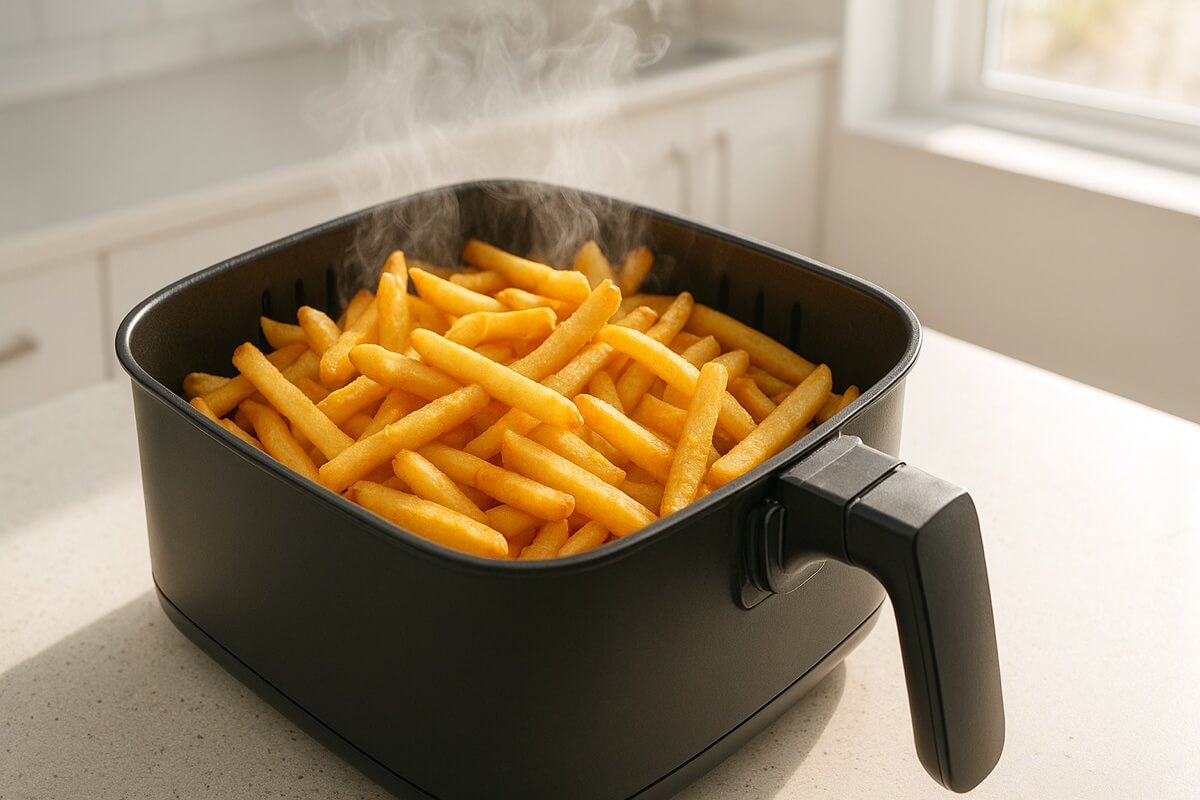The Air Fryer
It has become one of the most popular kitchen appliances in recent years. Promising crispy results with little to no oil, it’s marketed as a healthier alternative to deep frying. But what exactly does it do, and is it worth the counter space?

How an Air Fryer Works
Despite the name, an air fryer doesn’t fry food in oil. It’s essentially a compact convection oven:
- Hot air circulation – a fan rapidly circulates heat around the food
- Basket design – allows air to flow evenly, crisping the surface
- High heat – typically cooks at 175–200 °C (350–400 °F)
The result is food with a crispy exterior and tender interior, similar to frying but without being submerged in oil.
Advantages of an Air Fryer
- Healthier cooking – requires much less oil than deep frying
- Faster than the oven – preheats quickly and cooks small portions faster
- Versatile – can roast, bake, and even reheat leftovers
- Convenient – easy to use, clean, and store
Best Foods to Cook in an Air Fryer
- French fries and potato wedges – crispy outside, fluffy inside
- Chicken wings and drumsticks – golden skin without deep frying
- Vegetables – roasted Brussels sprouts, broccoli, or zucchini
- Frozen snacks – fries, nuggets, spring rolls cook quickly and evenly
- Reheating – pizza, fried foods, or roasted potatoes regain crispness better than in a microwave
Limitations
- Small capacity – not ideal for cooking for a crowd
- Texture difference – while crispy, results aren’t identical to deep frying
- Space – takes up counter space, which might not suit every kitchen
Conclusion
An air fryer won’t replace your oven but it excels at small, quick, crispy dishes with minimal oil. From fries to chicken wings to reheating leftovers, it’s a convenient tool that can make everyday cooking easier and healthier.